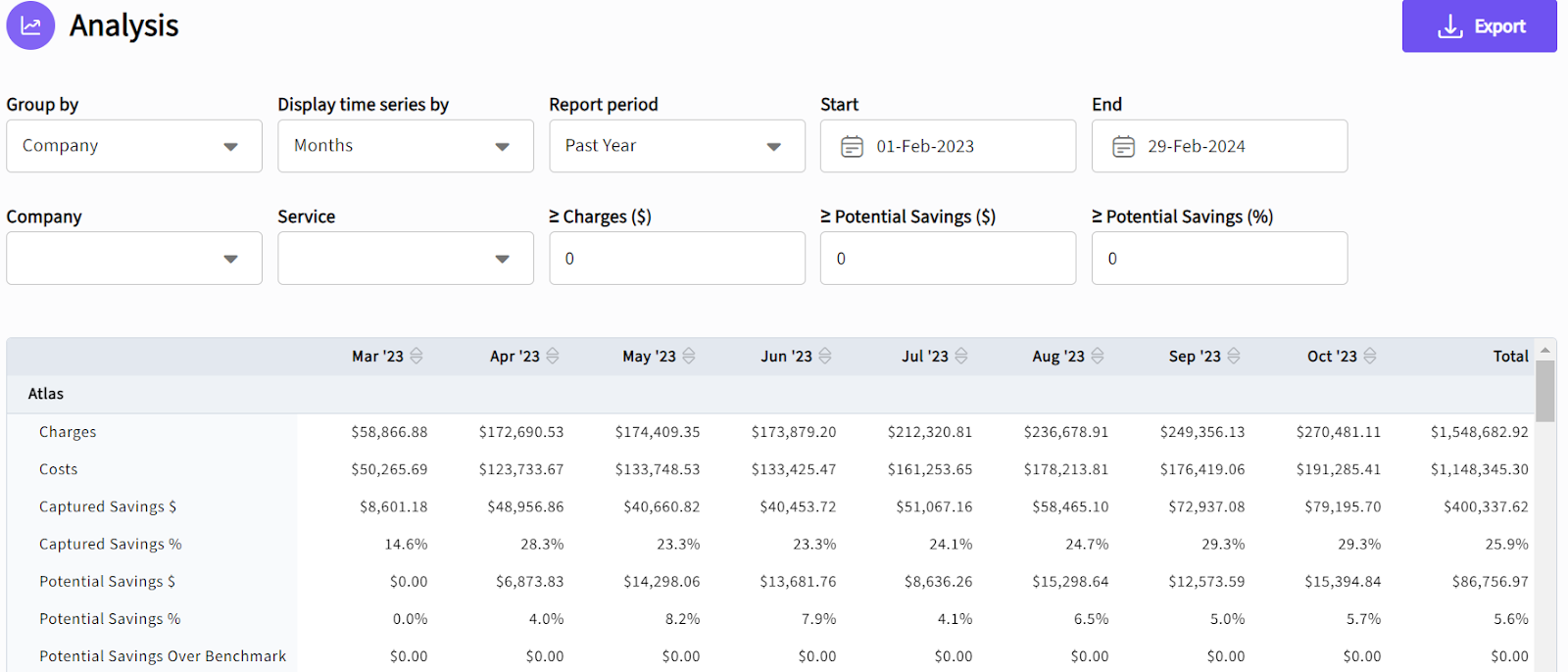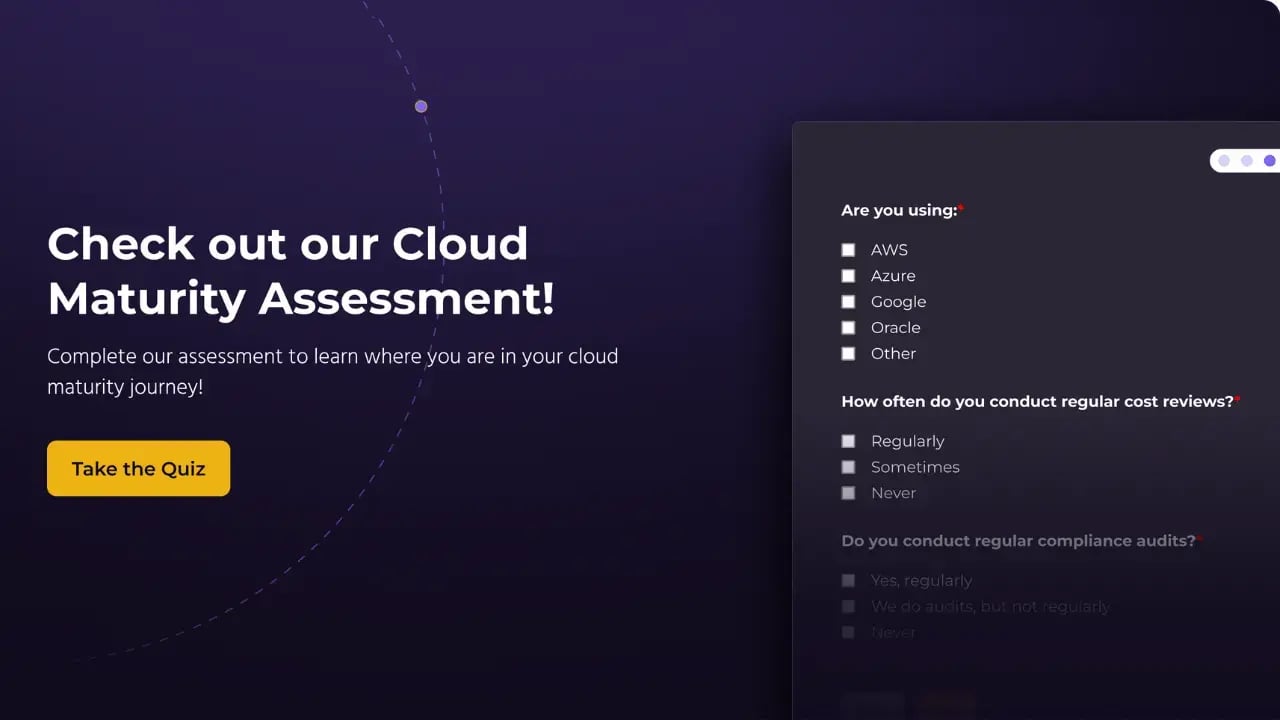An Amazon Web Services Enterprise Discount Program (AWS EDP) is a savings program that AWS offers to high-spend customers. If you have spent over $1 million per year for the past few years, you may be eligible to join the program. You would have to commit for 1-5 years to receive a discount on your total AWS spend, calculated to include an increase year on year.
A practical example would be, your team analyzes AWS cloud spending and sees you’ve increased for the past 2 years $500,000 yearly, and currently spend $3 million. You open negotiations with Amazon to join their AWS EDP and decide to commit to 5 years with 65% off on-demand price with the same growth prediction as you’ve seen for the past few years.
The high discounts make EDP an attractive program, and it’s popular among AWS clients who have high spending. If you have predictable spending, and flexibility to negotiate terms based on your needs and would like to save AWS costs it can be great.
However, you need to pay upfront, it’s a long-term commitment and if you don’t meet the usage you predicted, it wastes resources. So it’s important to ensure you don’t make these 3 AWS EDP application mistakes.
3 AWS EDP Application Errors You're Making & How to Fix Them
1 - Overcommitting Based on Growth Projections
Predicting AWS usage can be complicated, your engineering and finance teams need to work closely together to ensure that they’re not overly optimistic or too pessimistic. If you overcommit, then you will end up wasting resources and with higher costs in the long run. Once you commit and move forward with AWS EDP, it’s not flexible, so you can’t change what you have negotiated.
Using Stratusphere™ FinOps’s cutting-edge technology you can easily view and analyze your spending and use the software’s modeling to precisely understand your previous expenses to accurately forecast the future. Using Stratusphere™ FinOps’s insights into your FinOps spending with our team’s expert analysis and market knowledge, you will be able to apply for EDP knowing that you have the best data at your disposal.

2 - Not Accounting for Other Savings Opportunities
Businesses often move forward with AWS Private Pricing Addendum (PPA), which is another name for the EDP, without investigating other opportunities to optimize costs with AWS spending. Other common pricing models are:
-
Reserved Instances (RI): RIs can provide up to 72% discount compared to on-demand and provide a capacity reservation when used in a specific Availability Zone. Standard RIs, which offer the highest discounts don’t have the flexibility to change families, OS types, or tenancies. If you go for Convertible RIs you have fewer discounts, but you do get that flexibility.
-
Saving Plans (SP): AWS offers different types of Saving Plans depending on what you’re looking for.
-
Compute Savings Plans: With this plan, you make an hourly spending commitment for one or three years. This is automatically applied to any eligible Amazon EC2, Fargate, and Lambda usage. You can save up to 66% compared to on-demand.
-
EC2 Instance Savings Plans: Here you make a commitment to an instance family and Region for one or three years. As it’s less flexible you can save up to 72%.
-
Amazon SageMaker Savings Plans: Your discount would be applied to any SageMaker ML instance usage, and you would need to commit to a one or three-year plan. You could save up to 64% in comparison to on-demand pricing.
-
Spot Instances: You can use available EC2 capacity with up to 90% discount with Spot Instances. The risk is that AWS can demand this space back at any time, which may disrupt your workload. You can also use Spot Instances with AWS Elastic Container Service (ECS) Fargate, this runs containers without you needing to deploy or manage any EC2 instances.
If you go ahead with the Amazon EDP without optimizing your costs first, you will end up spending too much, so even if you have decided to go down that path, make sure that you have analyzed where you can save. With Stratusphere™ FinOps’s insights, you can fully understand your opportunities for cost optimization, and prioritize those before opening EDP negotiations.
3 - Ineffective Negotiation Due to Lack of Knowledge
The last mistake in Amazon EDP negotiation is going in without fully understanding your needs and spending.
Often companies don’t accurately predict their AWS growth, they don’t understand their Total Cost of Ownership (TCO) under EDP, and they don’t consider AWS app spending as this counts toward your committed spend.
By understanding the market and your usage trends you can demonstrate the ROI on your business plans to scale AWS EDP. You should show the AWS team the value that your business will bring them to negotiate more effectively.
Stratusphere™ FinOps can prepare you for AWS EDP negotiations, and inform your decisions to ensure that your cloud spending is optimized. You can see normalized data over time so that you can model different performance. Our highly knowledgeable team can also provide assistance and insights to help your negotiation.
Revolutionize Your AWS EDP Approach with Stratusphere™ FinOps by StratusGrid
AWS EDP can bring huge benefits to your business with high discounts and scaleable space, however, you need to negotiate effectively to receive these benefits. By analyzing other sales opportunities, having accurate growth predictions, and having enough knowledge, you can unlock great cost optimization.
Stratusphere™ FinOps is here to help you with that mission, our insights provide you with a plan of action to save on AWS before embarking on Amazon EDP. Stratusphere™ FinOps revolutionizes how you analyze and optimize cloud expenditure. The StratusGrid team can help you navigate the EDP negotiation with our tailored advice and a full understanding of your spending and growth. Start your 30-day free trial!
See Stratusphere™ FinOps in Action Here
BONUS: Find Out if Your Organization is Ready for The Cloud ⤵️
